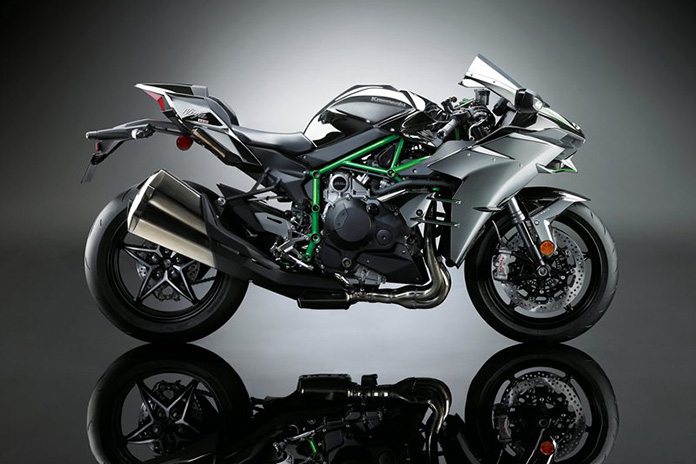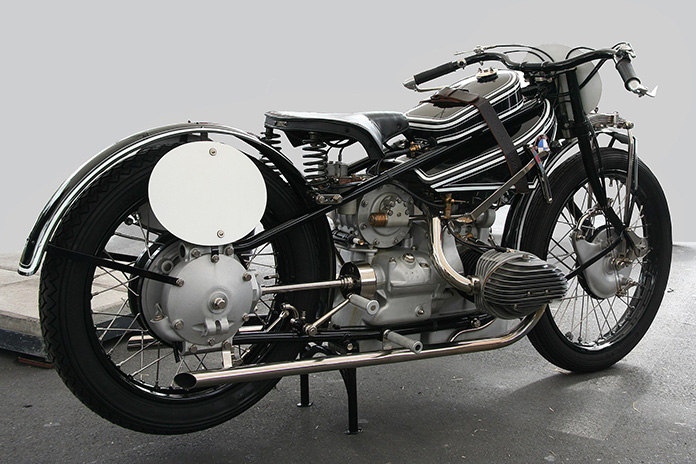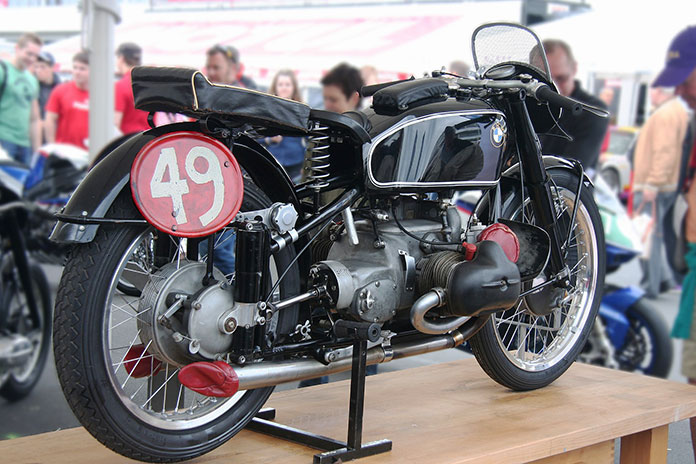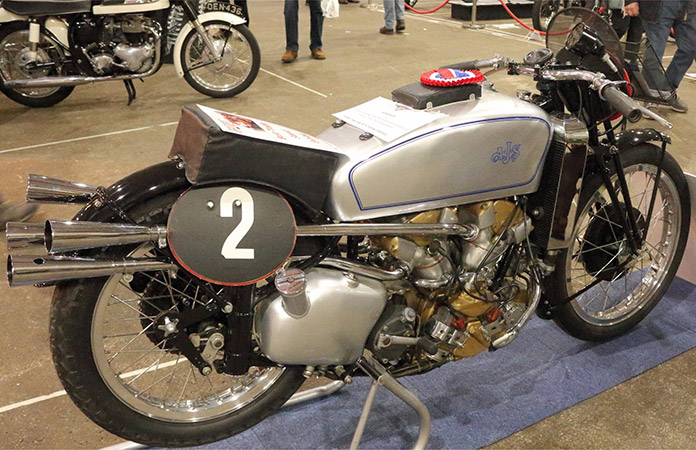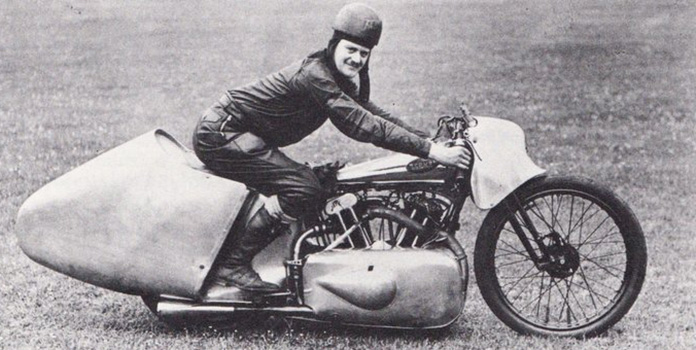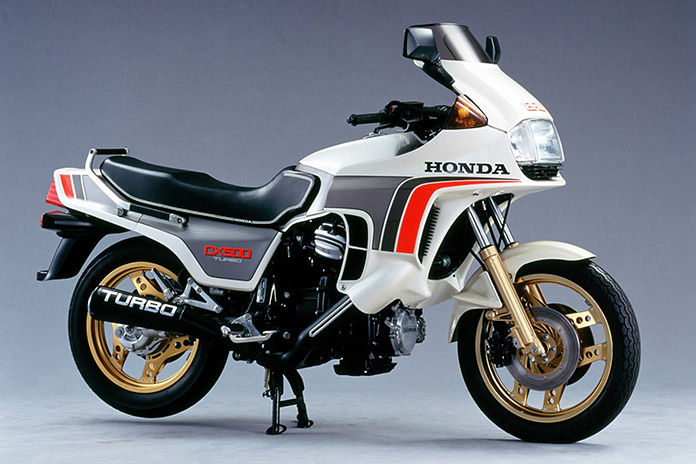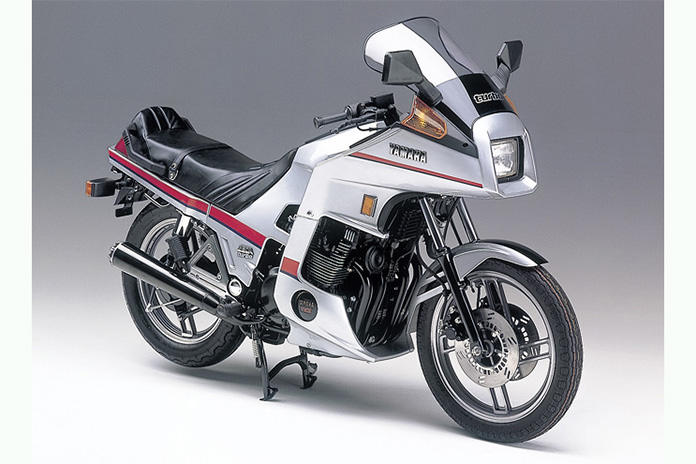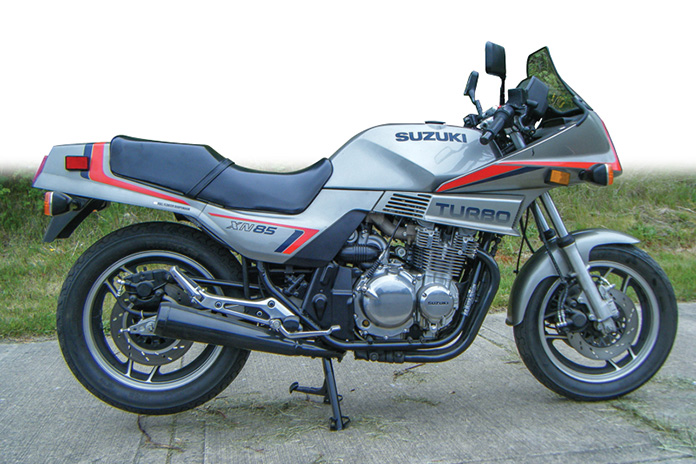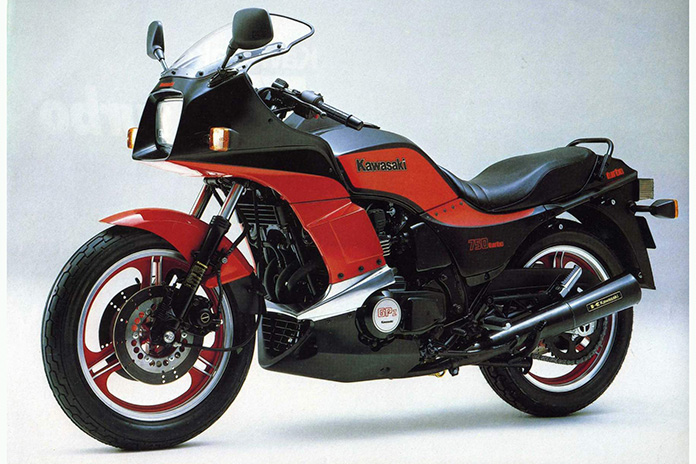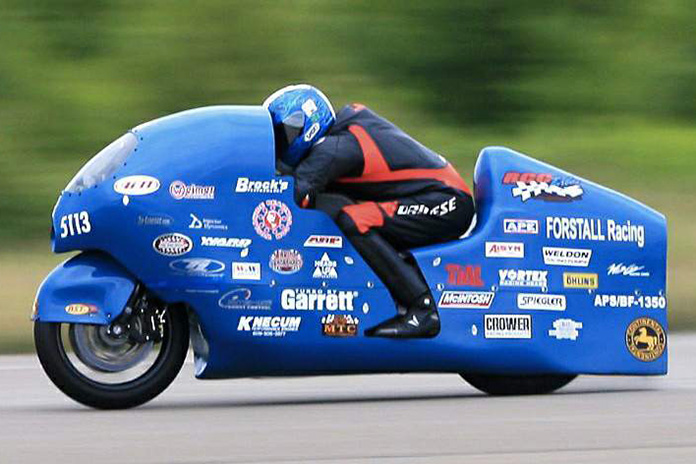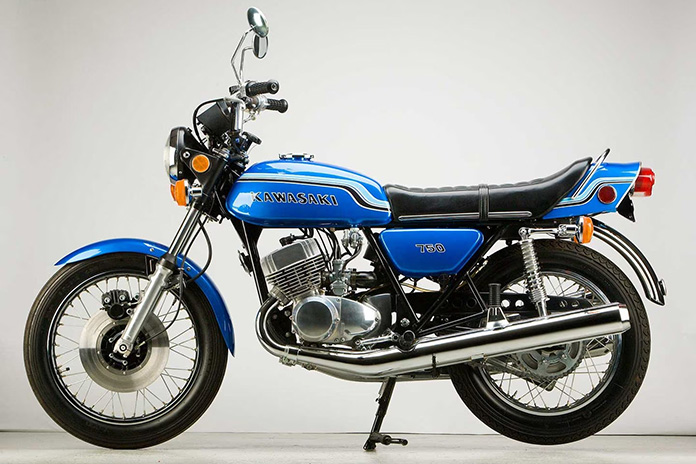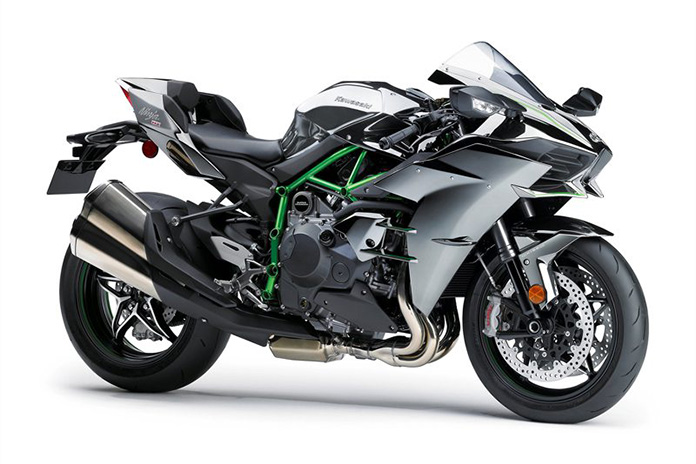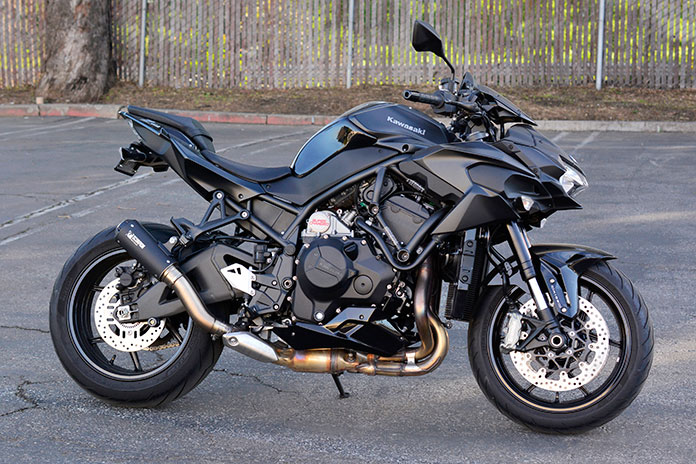A Century of Supercharged and Turbocharged Bikes

[ad_1]
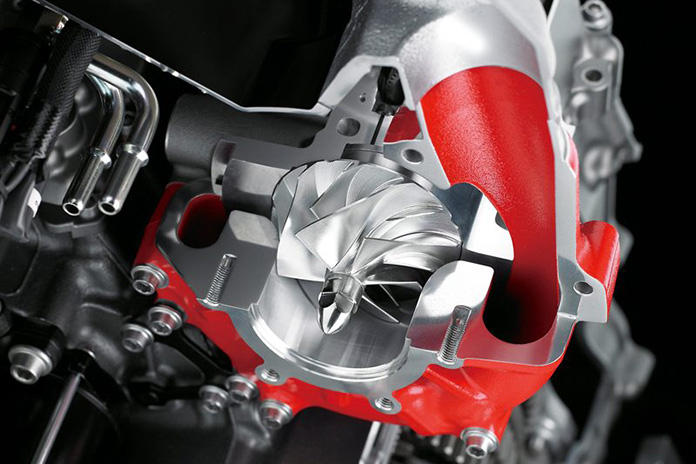
Contributor Erik Slaven takes us on a journey by a century’s price of historical past on supercharged and turbocharged bikes, the Marvel Twins of pressured induction. –Ed.
As a Kawasaki Z H2 proprietor, I can guarantee you that built-in superchargers aren’t any gimmick. My Kawi is by far the quickest bike I’ve owned, and the sportier Ninja H2 is among the many quickest road bikes ever produced. The BMW S 1000 RR, Ducati Panigale, and Suzuki Hayabusa present that naturally aspirated bikes are nonetheless ridiculously quick, however acceleration from the Z H2 feels quicker as a result of the engine doesn’t should be revved out as a lot.
Kawasaki’s supercharger, which debuted on the H2 R on the 2014 Intermot present, is like an afterburner for the 998cc inline-4. It helps the engine push out nearly 200 hp and over 100 lb-ft of torque on the Z H2, whereas the Ninja H2 churns out as a lot as 228 hp and the experts-and-track-ready Ninja H2 R makes upwards of 300 hp.
Commercial
Associated: 2015 Kawasaki Ninja H2 First Look Evaluate
Kawasaki reignited curiosity in superchargers, however the know-how has been used on bikes for practically a century. BMW was an early pioneer within the late Nineteen Twenties, and different producers adopted go well with previous to World Struggle II. When motorbike racing resumed in Europe in 1946, the Fédération Internationale de Motocyclisme (FIM) banned superchargers to cut back accidents and deaths, placing pressured induction on the backburner till the late Nineteen Seventies. Think about going over 150mph with a supercharged engine on a prewar chassis and tires. Yikes.
The Golden Age of Supercharged Bikes
Born from racing, supercharged European bikes had been the genesis for the evolution of high-performance bikes. American manufacturers like Harley-Davidson and Indian had been successful races at house with naturally aspirated engines. BMW began producing bikes in 1923, and by the tip of the last decade, it had developed the WR 750. Powered by a supercharged 4-stroke OHV 750cc boxer Twin, the WR 750 earned BMW a land-speed report at over 134 mph with German racing champion Ernst Henne on the controls.
Associated: Driving the Motorbike Century
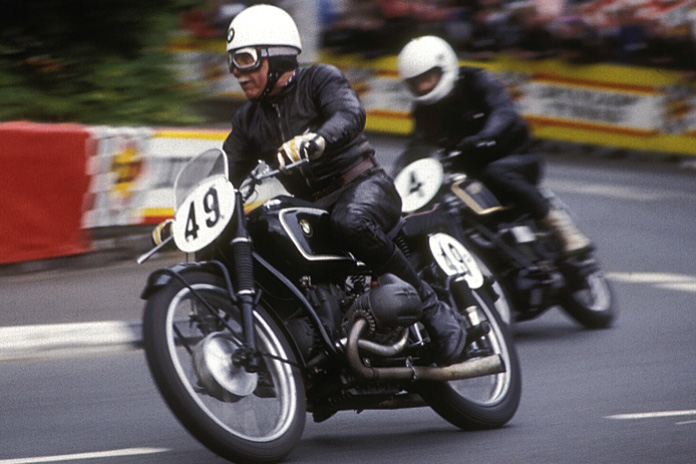
The WR 750 was spectacular however couldn’t overcome English dominance on the time, so the BMW Kind 255 Kompressor was the subsequent step. In 1939, Georg Meier gained the Senior Vacationer Trophy race on the Isle of Man on the Kind 255, marking the primary time a non-English rider had gained since 1907. Utilizing a Swiss-made Zoller supercharger, BMW’s 500cc Boxer produced round 60 hp and averaged 89 mph on the race. Meier gained the Belgian motorbike Grand Prix in 1939 as properly, turning into the primary rider to exceed 100 mph on a lap. The Kind 255 was a bona fide superbike for BMW and demonstrated the numerous efficiency benefits of pressured induction.
Pre-Struggle Grand Prix
Motorbike racing was all the trend within the Thirties, and superchargers had been widespread for many European groups. The notable holdout was Norton, which held regular with tried-and-true naturally aspirated Singles. British producer AJS developed a supercharged V-4 monster with a excessive high velocity, but it surely proved unreliable and both overheated or just broke down throughout races. It lastly gained a race in Belgium in 1946, simply earlier than the supercharger ban went into impact.
Luxurious British producer Brough Superior developed among the quickest supercharged bikes of the period. In 1937, Eric Fernihough set a report of 169.79 mph with a supercharged 1,000cc J.A.P. engine in his Brough Superior. Pure madness on the time, and he was killed the next yr chasing one other report.
At the moment, naturally aspirated bikes can exceed 200 hp and nonetheless meet Euro 5 emissions requirements, which is an unbelievable testomony to how far design and know-how have come. Compelled induction would possibly seem to be overkill, however nothing exceeds like extra. So, what’s the distinction between a supercharger and turbo, anyway?
Supercharger
A supercharger is mechanical gadget that forces extra air into the engine to supply extra energy for a given displacement. In a automobile, a supercharger is usually pushed by a belt that wraps round a pulley between the drive and compressor gears. In a contemporary motorbike just like the Kawasaki H2s, a system of gears related to the flywheel drives the impeller, which is a metallic fan used to compress the consumption gasoline. The impeller should spin a lot quicker than the engine to successfully compress the air. Kawasaki’s supercharger makes use of planetary gears to spin the impeller as much as 130,000 rpm and develops as much as 20.5 psi enhance stress.
Turbocharger
Whereas a supercharger is pushed by the engine, a turbocharger is powered by the circulate of exhaust gases. Wind powered, if you’ll. The exhaust spins an impeller within the turbo housing, which is related to a second impeller within the compressor housing that forces further air into the engine. It might take a second for the exhaust to get the impeller spinning quick, which creates turbo lag. Superchargers, however, are at all times “there,” because the engine is constantly powering them. Turbochargers are comparatively lag-free right now, but it surely does persist to various levels.
The Golden Age of Turbocharged Bikes
1978 Kawasaki Z1R-TC
Not like the pre-war period fixation on superchargers, the subsequent wave of two-wheeled pressured induction was all about turbos, beginning within the late Nineteen Seventies. The Kawasaki Z1R-TC was the primary manufacturing turbo motorbike, kicking off what turned out to be a short-lived craze. It had a 1,000cc inline-4 that was a manufacturing facility approved conversion of the usual Z1R bikes. A Rajay turbocharger pushed the Z1R-TC to 130 hp (from 94 hp), which was fairly a powerhouse within the late ’70s and excessive sufficient that patrons needed to relinquish the manufacturing facility guarantee. It was a daring resolution by Kawasaki on the time. Solely 250 had been constructed, as they had been costly and sophisticated, but it surely obtained the Japanese business scrambling.
Associated: Kawasaki KZ1000 Z1-R TC (Turbocharged): 1978-1979
1982 Honda CX500T
Not like the Z1R-TC, Honda’s first turbocharged bike was born within the manufacturing facility, and lots of think about it the primary correct manufacturing facility turbo. I personally give that accomplishment to Kawasaki, however that’s a battle for one more day. The water cooled CX500T had an angled, horizontal V-twin impressed by Moto Guzzi and an early gas injection system, boosted to 80hp by the turbo. Sadly, the bike was plagued with turbo lag, so Honda upgraded to a 650cc variant the next yr with the CX650. The elevated displacement and modified (and lowered) enhance introduced the brand new bike to 100 hp, however turbo lag persevered and the value was simply too excessive. These had been quick lived and disappeared on the finish of 1983.
1982 Yamaha XJ650 Turbo
Yamaha launched its personal turbo quickly after Honda, the 90-hp XJ650 Turbo. It was a heavier touring bike in lieu of one thing extra efficiency oriented. It additionally wasn’t a ground-up design however moderately primarily based on the older XJ650 Seca with a mediocre chassis, drum brakes, and shaft drive, together with outdated Mikuni carburetors. A uneven throttle, unhealthy turbo lag, and lackluster acceleration killed manufacturing after two years. Upkeep points had been additionally unhealthy, as ambition appeared to exceed what was possible on the time.
Associated: Retrospective: Yamaha XJ650RJ Seca 650: 1982
1983 Suzuki XN85
Suzuki’s first turbocharged motorbike, the XN85 of 1983, was a formidable effort. Like Honda, it was gas injected, however solely oil cooled and pushed out 85 hp. Turbo lag was lower than the others, and the chassis was constructed particularly for the elevated energy. Like all early turbos, it was complicated and costly to supply, resulting in restricted manufacturing numbers. It did, nonetheless, survive for 5 years, making it probably the most profitable mannequin.
Associated: Retrospective: 1983 Suzuki XN85 Turbo
1984 Kawasaki GPz750 Turbo
Six yr after the Z1R-TC, Kawasaki launched the GPz750 Turbo, aka the ZX750-E Turbo. Not like earlier Japanese efforts that had been deserted at this level, the GPz750 was the actual deal. A correct sportbike design held the 738cc inline-4, which produced 112 hp and was good for 10.71 seconds within the quarter mile. The present GPz750 engine was closely modified, and the turbocharged outcome was the primary middleweight that outperformed early ’80s liter bikes. Kawasaki’s GPz1100 sportbike trailed behind the a lot smaller GPz750 by 3 hp, proving that turbos had been severe contenders and never mere novelties. Model, efficiency, and reliability made this the primary actually marketable turbocharged motorbike and overshadowed all prior efforts. Alas, it was produced for under two years.
Associated: Retrospective: 1984-1985 Kawasaki ZX750-E Turbo
Why Did Turbos Fizzle Out?
In lower than 10 years, the turbo craze unfold like wildfire among the many Huge 4 Japanese producers and burned itself out. The thought was easy and interesting – use pressured induction to extract extra energy out of middleweight engines. However the actuality overpromised and underdelivered. Turbochargers proved to be too complicated and costly, and the payoff wasn’t sufficiently big to make them a viable different to bigger naturally aspirated engines – at the very least not on the time.
Let’s Get Boosted!

After Japanese producers deserted turbos, adrenaline junkies continued bolting aftermarket ones to their pure breathers. One of many large names within the enterprise is Trask Efficiency, which produces turbocharged kits for Harleys that may squeeze 300 hp out of massive V-Twins. In my thoughts, such turbo kits take advantage of sense on 1,200cc Evo Sportsters which might be comparatively gentle and nimble, and the outcome can greater than double the inventory energy and ship 120 hp on the rear wheel.
Associated: Evo Sportster | Finish of an Period
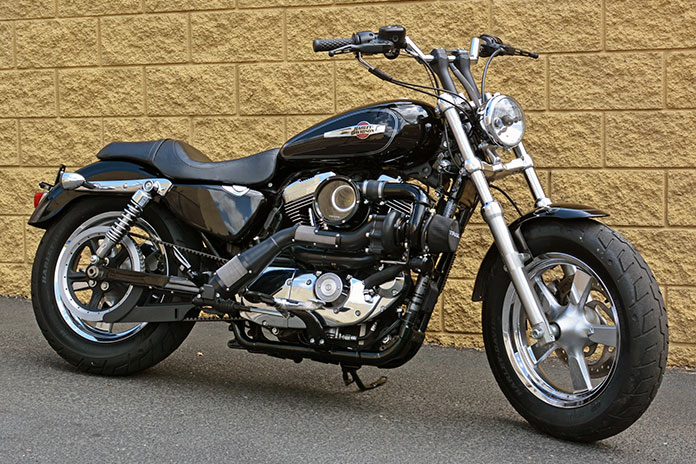
Trask isn’t the one firm with turbo kits, and variations can be found that may be put in on a variety of bike sorts and fashions. Excessive Creations, RCC, Cobalt, and others supply turbochargers that ship plane service catapult-caliber launches. It’s also possible to purchase supercharger kits from corporations like Rotrex, ProCharger, and TTS Efficiency. And if you happen to’re curious, the reply is sure – putting in any of them will void your manufacturing facility guarantee.
Turbocharged Suzuki Hayabusa
We are able to’t overview the historical past of pressured induction on bikes and overlook a bona fide legend. In 1999, Suzuki launched the GSX1300R Hayabusa, which gained the short-lived top-speed wars of the late ’90s. In inventory kind, the first-gen 173-hp Hayabusa practically broke the elusive 200 mph barrier. The second-gen ’Busa obtained bumped as much as 1,340cc and 194 hp, however by then, the OEMs had agreed to impose an electronically restricted high velocity of 186 mph (300 kph) on its manufacturing bikes.
Associated: 2022 Suzuki Hayabusa | Street Take a look at Evaluate
However with some digital sleight of hand – and an enormous ol’ turbo – the Hayabusa’s true potential may very well be unleashed. In 2011, Invoice Warner set a motorbike land-speed report of 311 mph on a streamlined and turbocharged ‘Busa. Add nitrous to the combination, and issues simply get insane. In 2018, a 1,000-hp ’Busa hit 258.54 mph inside 1 mile from a standing begin at a Straightliners top-speed occasion in Yorkshire, U.Ok.
Kawasaki Ninja H2
In 2014, we got here full circle when Kawasaki launched the Ninja H2, a manufacturing facility supercharged sportbike. Over 75 years after superchargers disappeared from European racebikes, Kawasaki resurrected the idea with probably the most profitable lineup of forced-induction bikes in fashionable historical past. The identify comes from Kawasaki’s ’70s-era H2 fashions powered by 750cc 2-stroke Triples. The 1972 Kawasaki H2 Mach IV, the quickest bike of its day, was referred to as “the widow maker,” because the chassis and total design weren’t fitted to a lot energy.
The 2014 Ninja H2 has a 998cc inline-4 with a centrifugal supercharger developed solely in-house at Kawasaki. The producer had meant to outsource the supercharger, however these plans finally referred to as for a cumbersome intercooler, so Kawasaki introduced it underneath its personal roof. The outcome was an unbiased and compact unit that reinforces a rising H2 portfolio with 4 bikes within the present lineup: Ninja H2, Ninja H2 R, Ninja H2 SX, and Z H2.
The Ninja H2 and up-spec Ninja H2 Carbon produce a claimed 228 hp and 105 lb-ft of torque, whereas the track-only H2 R raises the bar significantly with 326 hp and 122 lb-ft of torque. The H2 R is presently the quickest manufacturing motorbike of all time, however it’s not road authorized. The usual Ninja H2 is heavier than many sportbikes (round 525 lb moist) and gained’t deal with a observe in addition to purpose-built machines, however the depth of acceleration and nonetheless competent efficiency make it one the craziest rides you should buy. With a beginning value of $31,500, it’s undoubtedly spendy, but it surely’s a relative discount in comparison with the $56,000 H2 R.
The Ninja H2 SX and Z H2 characterize the second-generation of H2 engines, tuned for extra real-world circumstances with 197 hp and 101 lb-ft of torque. The H2 SX is a sport-touring sportbike with a moist weight over 600 lb, but it surely nonetheless accelerates like a rabid cheetah with out having to rev it out.
Associated: 2018 Kawasaki Ninja H2 SX SE | Street Take a look at Evaluate
Launched for 2020, the Z H2 bare bike is the latest mannequin within the H2 lineup, and it’s additionally probably the most reasonably priced at $18,500, offering the magic of Kawasaki’s supercharger at a extra cheap value undercutting. It’s not a severe observe performer, but it surely’s not meant to be. It’s a streetbike although and thru, and it’s about as enjoyable because it will get with an upright place providing all-day consolation. The up-spec Z H2 SE ($21,700) is supplied with Kawasaki’s Digital Management Suspension (KECS) and upgraded Brembo calipers, however the core expertise is there with the usual mannequin.
Sensible Madness
It’s a bit unusual calling a supercharged motorbike sensible, however the Z H2 proves that pressured induction might be each reasonably priced and dependable. It actually qualifies as an on a regular basis bike and is genuinely simple to dwell with, in contrast to some high-strung rivals. I don’t know what sorcery went into the supercharger’s design, however Kawasaki nailed it, and a particular chirp at deceleration reminds you that you just’re driving one thing particular. Supposedly it’s attributable to the impeller breaking the sound barrier. We’d prefer to see a return to the ’80s-era idea of including pressured induction to a middleweight. How cool wouldn’t it be to see a supercharged model of the Z650, Ninja ZX-6R, or the brand new Ninja ZX-4RR? Generally it’s good when historical past repeats itself.
[ad_2]
Source_link
